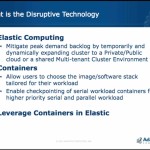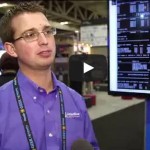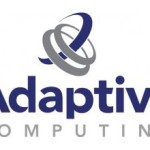“Cloud computing” is one of the most overloaded terms in the history of information technology. Yes, there is the NIST Definition of Cloud Computing that many will point to, but the sheer number of adaptations of models for “enabling ubiquitous, convenient, on-demand” access to computing resources knows no limit. In this sponsored post, our friends at Atos provide three major and very different types of issues and found that a common technology thread worked across the board. In fact, they also learned that while the models are different, organizations often benefit from more than one.
Video: Leveraging Containers in Elastic Environments
In this video from the Disruptive Technologies session at the 2015 HPC User Forum, Nick Ihli from Adaptive Computing presents: Leveraging Containers in Elastic Environments.
Video: Moab Adds Elastic Computing Features
“We received an overwhelmingly positive response to the new Moab features during SC14, so we¹re very excited to make the new features generally available. In a competitive computing landscape where enterprises need to accelerate insights, Moab matters,” said Rob Clyde, CEO of Adaptive Computing. “Automating workload workflows is imperative to shorten the timeline to discovery, and this latest version of Moab represents a huge step forward in helping enterprises achieve that. We are excited to reveal our latest innovations and continue driving competitive advantage for our customers.”
Adaptive Computing Rolls Out Moab 8.1
Moab 8.1 systems management software includes a revamped Web-based user interface with bolstered reporting and tracking capabilities that give greater insight into the job states, workloads and nodes of a HPC system; massive performance gains and improvements in scale; and system improvements to achieve elastic computing to expand to other resources as workloads demand.







